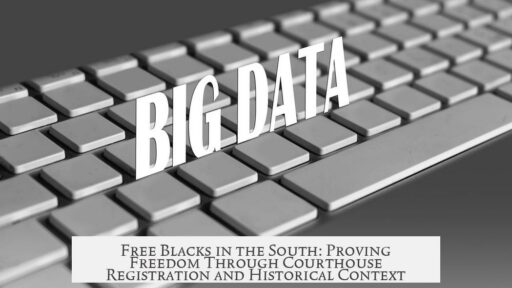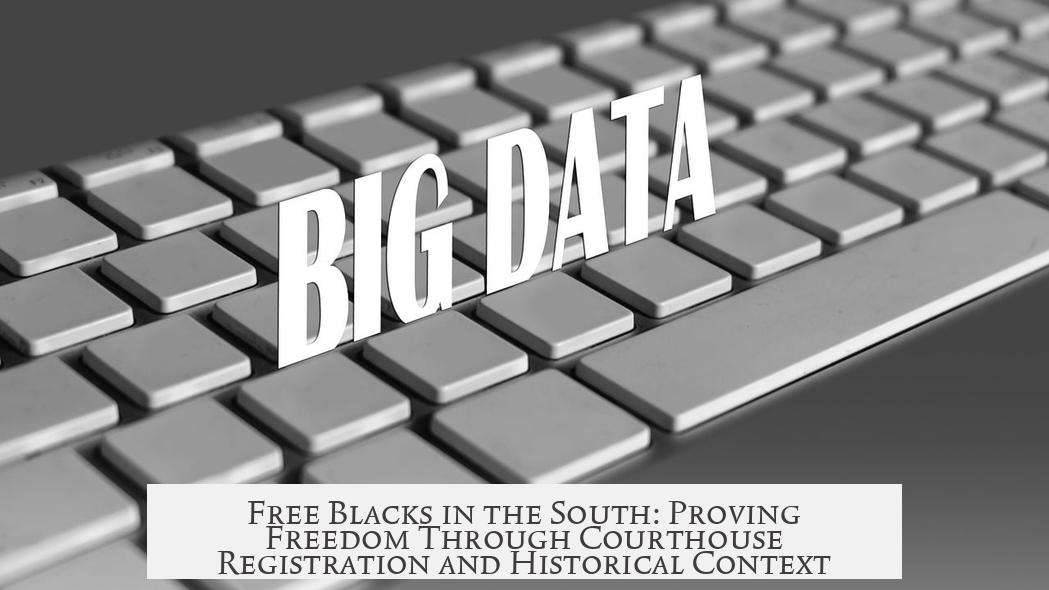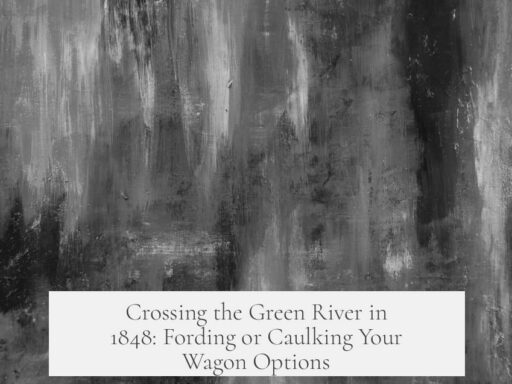Free Blacks in the South, especially in Virginia, proved their free status through official registration and legal documentation starting in 1803. To verify freedom, individuals registered at the courthouse. This official process created records that served as proof in case of disputes or wrongful detainment.
Documents used to establish freedom varied. Emancipation papers often appeared in wills. Some free Blacks could provide evidence that they were “born free” to a mother who was also free. Others showed receipts or records proving they or their families purchased freedom. Petitions for freedom included affidavits filed with the court, attesting to their free status.
Authorities added identifying details to registrations. These included physical traits such as height, posture, and any notable scars or marks. This was crucial for confirming identity if an individual was detained or accused of being enslaved.
Free Blacks faced constant threats from slave catchers, especially after the 1850 Fugitive Slave Act. This law increased risks as it empowered catchers to capture free Blacks and sell them into slavery without proper evidence. Registering and carrying proof became a vital defense.
Many free Blacks kept multiple forms of evidence to protect themselves. Courts documented all these proofs carefully. This system aimed to prevent illegal capture and maintain clear legal status for free individuals.
- Mandatory courthouse registration began in Virginia in 1803.
- Proof included emancipation papers, birth status, and purchase records.
- Physical descriptions ensured proper identification.
- Fugitive Slave Act of 1850 increased dangers for free Blacks.
- Court affidavits and petitions served as legal attestations.
These measures helped free Blacks defend their freedom in a hostile environment where their status was constantly challenged.
How Could Free Blacks in the South Prove Their Free Status?
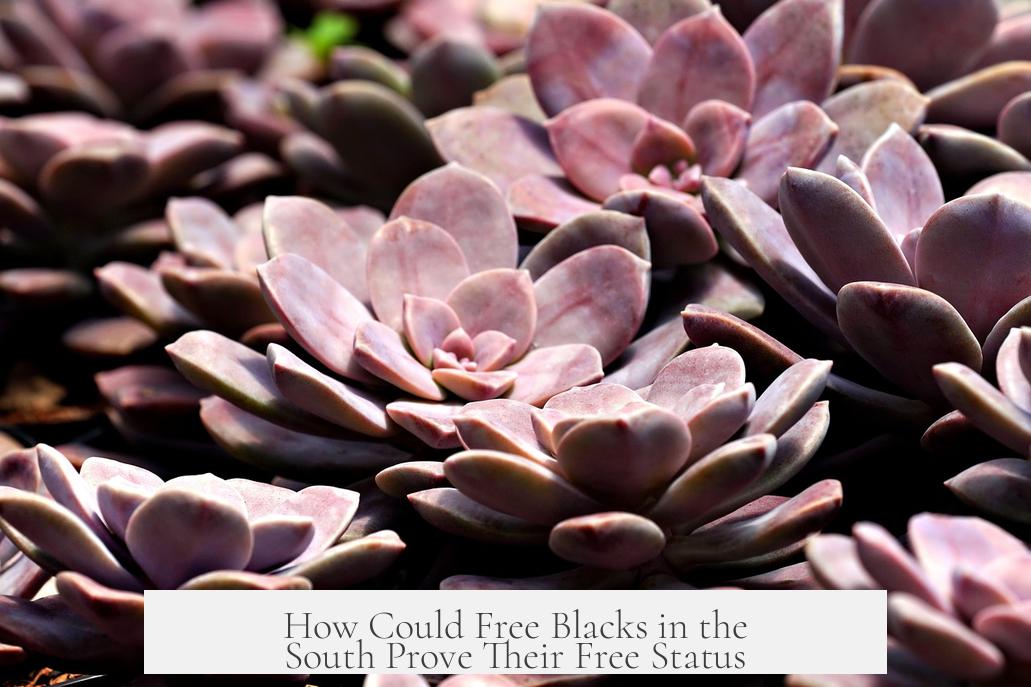
Free Blacks in the southern United States, especially in places like Virginia, faced a huge challenge: proving they were truly free. There was no casual “Hey, I’m free” moment. Instead, laws and harsh realities forced them into a strict system of documentation and identification, often under the threat of capture and enslavement. So, how did these courageous individuals prove their freedom?
First, let’s set the stage. Starting in 1803, Virginia mandated that all free Blacks register their status at the courthouse.
Registering at the Courthouse: The First Line of Defense
Registration wasn’t just a bureaucratic formality. It became an official record of freedom. Imagine standing before local officials, providing your name and a host of details, hoping that piece of paper would protect you from being mistaken for a slave or worse, seized by bounty hunters. This registration was a critical safeguard but also hung a heavy cloak of surveillance over free Blacks’ heads.
The courthouse books became repositories of truth – for those who were free, these records were life-preserving evidence. Every free Black person needed an entry in these official ledgers. No registration? No proof. No proof? Into the jaws of uncertainty you went.
Means of Proof: What Counted as Freedom?
Proving freedom wasn’t as simple as flashing an ID. The documents and proofs were varied and could be quite complex.
- Emancipation paperwork: Often tied up in legal wills, these papers declared when a slave was freed – a rare and precious document.
- Birth status: Records showed if a person was “born free,” which was typically noted alongside the mother’s name.
- Proof of purchase: Evidence that an individual or their family had bought their freedom was another accepted method.
- Petitions and affidavits: Court documents where people swore under oath about their freedom.
It’s almost like they had to collect receipts for their freedom — a bureaucratic maze in a world that didn’t want to acknowledge their liberty.
Identity Details: More Than Just a Name

Proving freedom wasn’t just about documents; physical descriptions played a vital role.
In court records, alongside names, you’d find details like their height, bearing, or even notable scars. Weirdly, these scars became badges of proof, biological watermarks of identity. You had to literally *be* the person you claimed to be.
Why all the detail? Imagine being picked up by an official or a slave catcher. The only way to argue, “Hey, I’m not a slave!” was to match the physical description in the courthouse books. This system wasn’t perfect, but without it, many free Blacks faced wrongful detention, or worse.
Under Threat: The Risk of Slave Catchers
The looming danger only escalated after the Fugitive Slave Act of 1850.
This law basically sent a chill down the spine of every free Black person in the South. Slave catchers could seize anyone suspected of being a runaway slave—and the “suspected” part was often based on the flimsiest of evidence.
Imagine living every day with the risk that you could be snatched away. The documents, registrations, and physical proofs weren’t just dry paperwork—they were literal shields against kidnapping. Yet even solid proof didn’t guarantee safety. The system was stacked heavily against free Blacks.
What Can We Learn From Their Stories?
These historical facts aren’t just dusty old trivia. They reveal how free Blacks ingeniously navigated a perilous world to claim and defend their freedom. It’s a story of resilience, legal savvy, and fierce determination amid adversity.
They had to carry a paper trail of emancipation, petitions, birth status, and detailed descriptions, all under the gaze of suspicious law enforcement and the ever-present threat of slave catchers.
It wasn’t just about proving a status; it was a daily fight to exist as free people in a society designed to deny that freedom.
Practical Tips From History for Today?
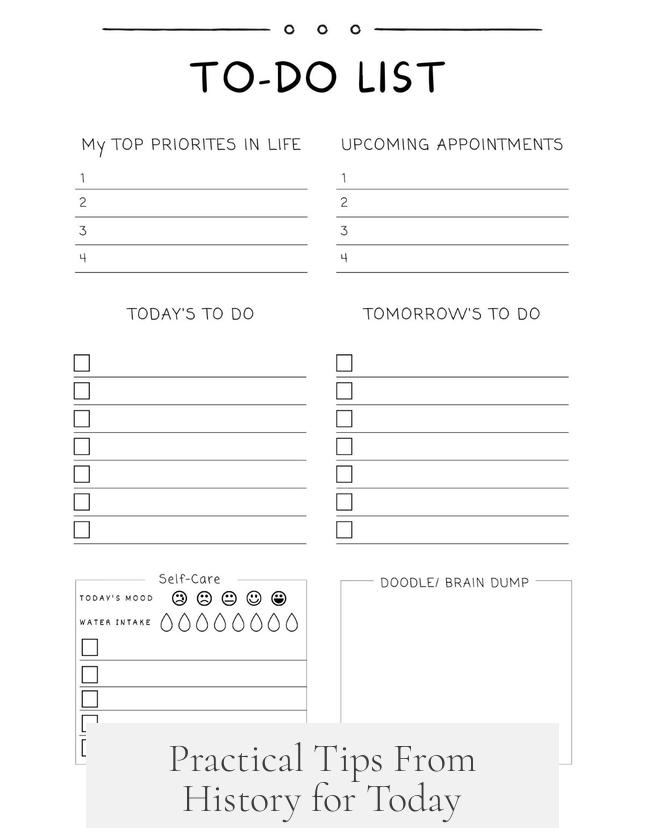
While we thankfully don’t face courthouse registrations to prove basic rights anymore, the legacy is clear:
- Documentation matters: Whether proving citizenship or identity today, a solid paper trail still protects rights.
- Know your rights: The free Blacks of the South had to understand laws deeply to protect themselves. Today, knowledge is still power.
- Physical identity helps: In many legal situations, clear identification is crucial—remember, even scars and height once mattered hugely.
- Always be prepared: Free Blacks needed petitions and affidavits ready. Modern advice? Keep documents like birth certificates, licenses, and wills well-organized.
Wrap-Up: Why This History Matters
Understanding how free Blacks in the South proved their free status provides valuable insights into legal history, social struggle, and human courage. These aren’t just old records; they are proof that freedom was earned and defended daily under brutal conditions.
Their stories remind us why records, rights, and recognition matter—and why a simple courthouse on a Virginia street was once a frontline in the fight for freedom.
So next time you flash an ID or sign a document, think about the incredible journey it took for some to be able to do exactly that. Pretty amazing, isn’t it?
How did free Blacks in Virginia officially register their status?
Starting in 1803, free Blacks had to register at the courthouse. This was a legal requirement to maintain proof of freedom. The registration included personal details for identification.
What documents could free Blacks use to prove they were free?
- Emancipation papers, often found in wills.
- Records showing they were born free, referring to the mother’s status.
- Proof of purchasing freedom for themselves or family members.
- Freedom petitions with court-filed affidavits.
What identifying details were recorded along with freedom status?
Besides names, details like height, bearing, and notable scars were recorded. These helped verify identity if someone was arrested or challenged about their freedom.
Why was it important for free Blacks to have detailed records about their freedom?
Slave catchers targeted free Blacks, especially after the 1850 Fugitive Slave Act. Detailed records helped prove their free status and avoid being captured or enslaved.
